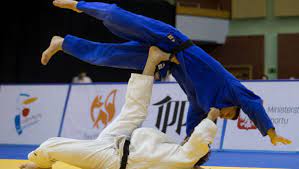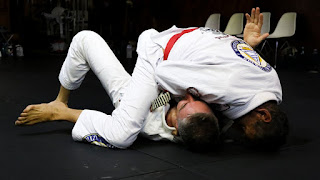Judo - A Combative Martial Art
Judo practitioners need to develop physical prowess through the use of various breathing techniques. This will prepare them for any number of physical confrontations. In addition, judo also requires the practitioner to have the ability to defend himself from any number of opponents who try to take advantage of his physical prowess. Judoka are required to defend themselves from attackers armed with several techniques designed to take advantage of their physical prowess. These techniques include chokes, holds, throws, elbows, gouges, punches, leg attacks, shrimps, and wrist attacks.
Judo is practiced as a gentle way of life and is frequently practiced by families, with the children spending part of the day in a training school. Judo has been called the most appropriate art for family and friends to spend time on, as it is both challenging and enjoyable. It is an ideal choice for those who wish to spend time building relationships, while learning a variety of exciting techniques that are suitable for any age group, as well as being suitable for anyone who wishes to develop personal confidence and control over their own bodily functions. No judo training is complete without the essential judo techniques of ground fighting, throwing, and Gotei, which are extremely powerful weapons that are only used as an icing on the cake.
While many believe that judo is primarily a martial art, the truth is that it is more of a combination of various sports, including gymnastics, athleticism, literature, dance, and medicine. In judo, the basic techniques focus on controlling the opponent, while using your body in ways to subdue the attacker. Judoka often use techniques such as Chiraku Jutsu, a version of the famous Chi Cha Jitsu technique, and the front leg sweep, an extremely versatile move that can be used in both striking and wrestling positions. Oji-Komis, or water slicing uchi-komis, utilize quick slaps of the hand and feet to achieve the same results. There are a number of other techniques as well, but these will give you a good idea of the direction in which judo consists.
The most common techniques in Judo training include Ginkaku Jutsuri and Kidokomis. Ginkaku Jutsuri deals with creating distance between the opponent and oneself, while Kidokomis involves throwing your entire body into the strike in order to shift its center of gravity, thus allowing it to increase the distance between yourself and your opponent. This technique is commonly used by judo students to surprise their opponents and create openings for attacks. Other common techniques include the shiai, or throwing your whole body into the strike, and the karate, or kicking the opponent in the shin.
While many consider judoka to be a sport similar to fencing, it is important to note that judokas must guard their entire bodies while in class. This is to ensure that they can maintain a safe distance between themselves and their opponent, while still keeping an eye on the entire situation. It is also important to note that judokas must keep their feet inside the distance between themselves and their opponent at all times. This can be done through the use of a hip lock, or other moves that force your opponent to step back. Because this is a highly competitive sport, judokas must always work to ensure that they are able to strike their opponent effectively while keeping an eye on the situation at all times.
Judo is known as being one of the most physically challenging martial arts out there, due to the fact that it requires a great deal of physical prowess. Unlike most other styles of fighting, there is no place for the traditional weapons such as knives and swords in judo. Most attacks in judo are done through the use of the head, including throws, counters, and chokes.
Due to the fact that judo techniques require an incredible amount of strength and physical prowess, the average judo student will often train for many years before becoming skilled enough to move onto more advanced judoka levels. As with most things in life, once you graduate from the beginning, the training stops. However, there are a number of different techniques available that a judoka can learn in order to increase his or her skill set. The techniques that are taught to beginners, as well as advanced judoka, usually start with basic groundwork techniques and continue from there.



Comments
Post a Comment